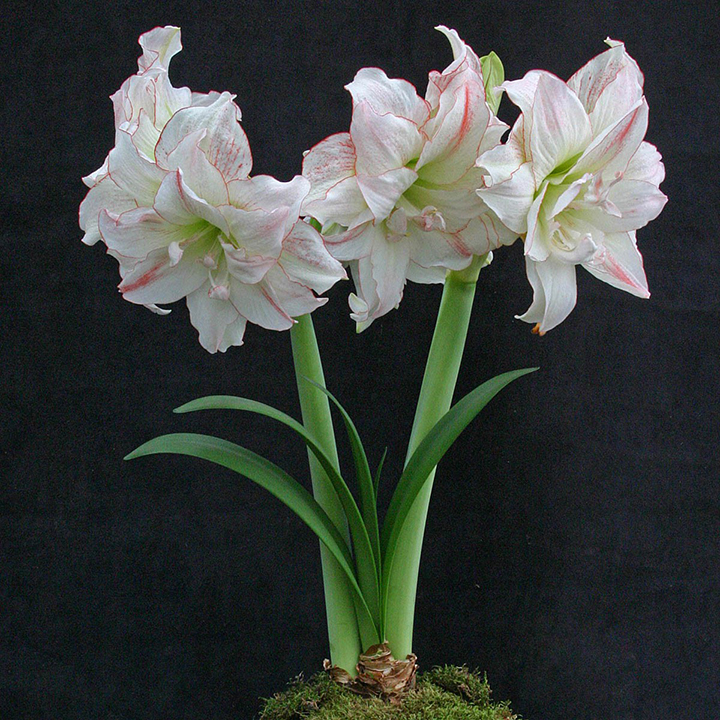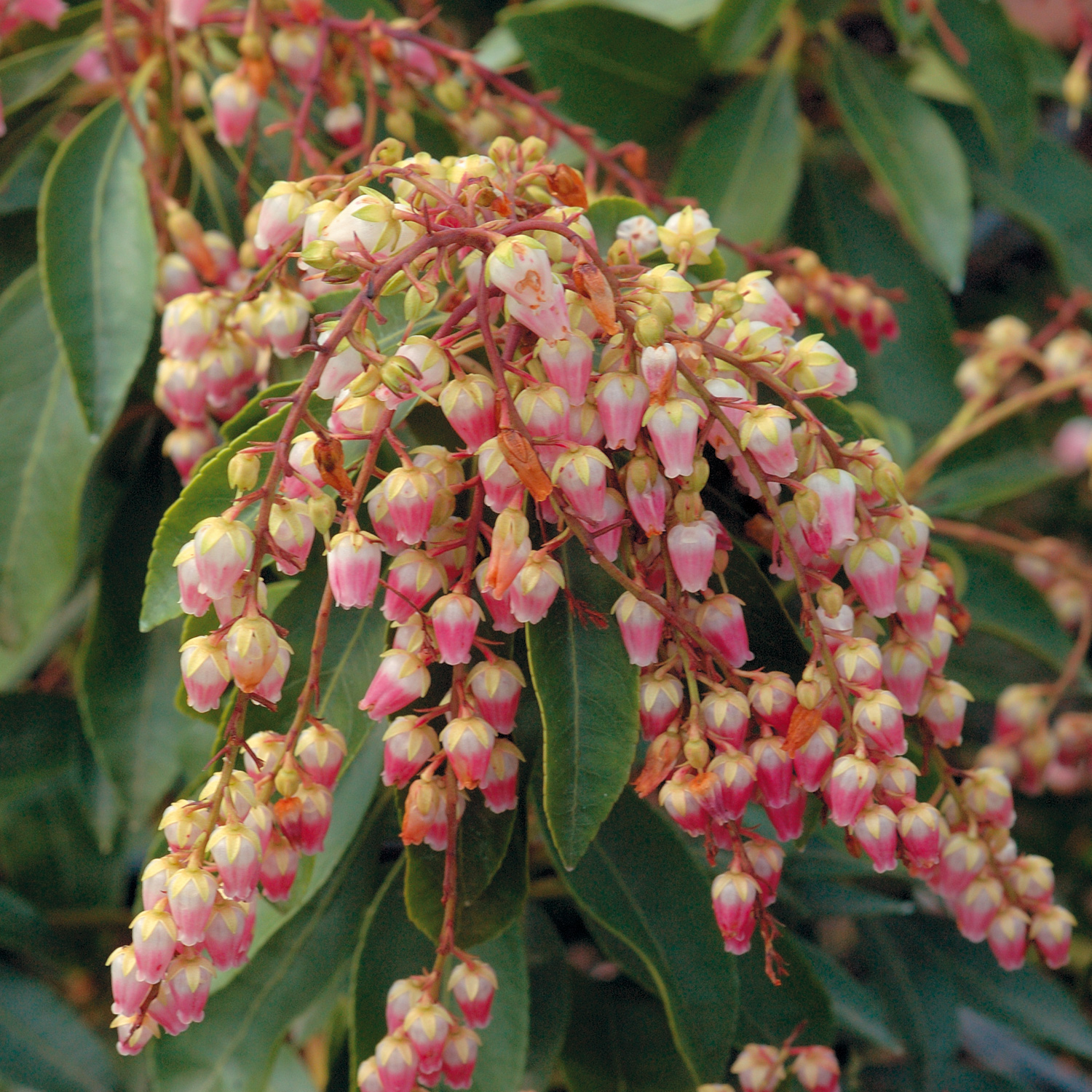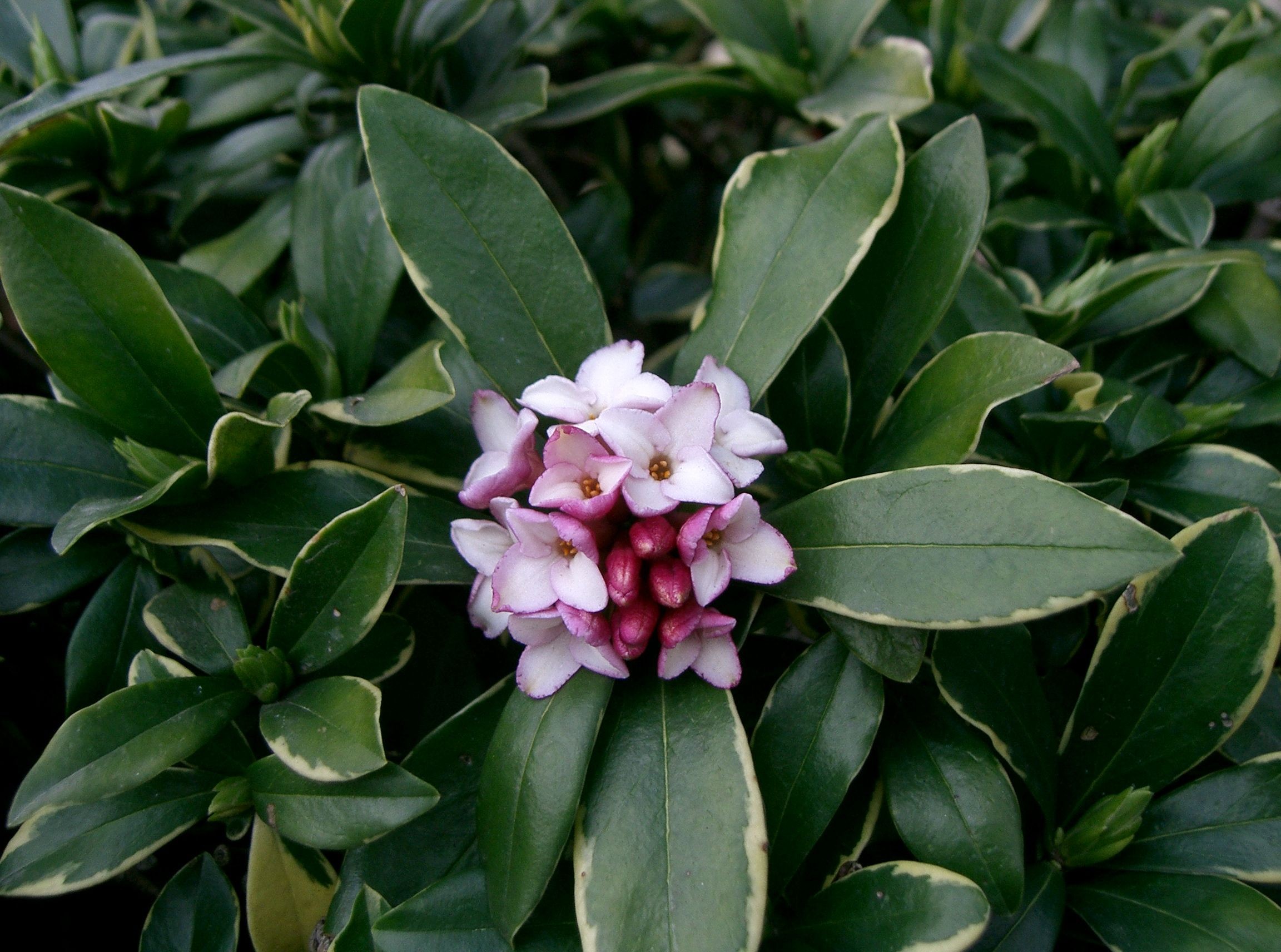Some people mourn the end of tomatoes fresh from the garden as fall and winter creep in every year. For me, I’m just fine moving on to canned vegetables – it’s the end of the flowers that kills me. I’ve started to pay more attention to winter-blooming flowers with their subtle tones and seasonal scents. Here are a few of my favorites. Let me know what you’re looking forward to in the way of winter flowers!
1) Amaryllis
I usually find myself falling in love with a new flower (or two, or ten) every year. This year amaryllis is on the top of the winter flower list. I truly don’t know how its beauty escaped me until now! We always had potted amaryllis bulbs in my house in the winter while I was growing up, and I didn’t give them a second thought. I think the turning point occurred when I started to really notice their shapely form in flower arrangements. Now I’m a firm believer.

One great thing about amaryllis is that you can easily plant them outside or inside in a pot. Once you start looking around at all the available varieties, you’ll be surprised at how nuanced and subtle some of the colors are – there’s really something for everyone.
Before planting, it’s best to soak the bottom of the bulbs in warm water for up to a few hours. Then plant in a rich potting mix or an amended garden bed. Bury the bulbs up to their necks, and tamp them down to secure. Amaryllis will benefit from direct sunlight and in fact needs a little heat. They should flower anywhere from 6 – 10 weeks later, depending on variety and cultural conditions. You can plant then anytime between October and April. If you cut off the old flowers, you should be able to encourage the bulb to keep flowering.
2) Pieris Japonica – aka Andromeda
The first time I saw Pieris (that I remember) was under a shaded overhang in front of a suburban house in rainy Oregon. There was no other interesting landscaping to speak of around this house, and the shrub stood out like a diamond in the rough. I was taken. I learned when venturing into my business as a wedding florist that it is a winter flower that’s used extensively in floral design – the drooping, nodding blooms are quite unique.

Pieris, if grown in favorable conditions, is a shrub that can grow up to 9 – 12 feet tall. The hanging flower clusters form in late summer but don’t open until the following year. It thrives in rich soil with good drainage (making compost and applying it liberally to your beds will always help with this). Pieris is happiest in full sun to part shade, and will perform best when partially sheltered from the wind and harsh elements. To keep the flowers blooming, cut them out when they’re spent.
3) Daphne Odora
The third one on my list of winter flowers is daphne. To know daphne is to love her. I associate daphne with the Pacific Northwest and the sweet smell after a rain. Native to China, this shrub reaches about 4 feet tall and is best distinguished, in my mind, by its intoxicating scent. I’ve never smelled anything like it!

Daphne is a tricky shrub to grow, causing even expert growers to have trouble and report sudden die-off of a seemingly established shrub once in a long while. My take on this is that it’s worth the risk (what good things in life aren’t, I ask you). While they could live up to 8 or 10 years, it’s crucial that you do not try to transplant established daphne shrubs. Their root systems are weak and spindly and just can’t handle it.
They’ll do best in well-drained, acidic, rich soil. If you’re blessed with one of those mythical spots of dappled sunlight in your yard, take advantage and carefully plant some daphne there. Be careful to only prune lightly and if truly necessary, and water infrequently through the summer.
Treat yourself and get these winter flowers in the ground! We’d love to hear what your favorite winter flowers are – go ahead and leave us a comment!







 Family
Family

